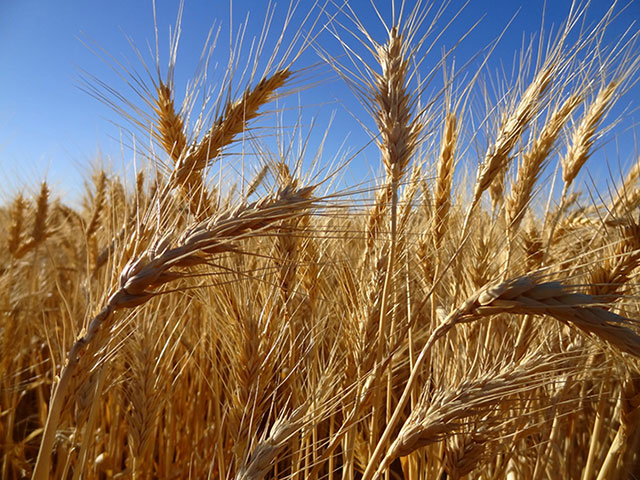Thinking inside the box: Port of Vancouver USA and North Dakota Agriculture turn empty train cars into opportunity, economic growth
 The Port of Vancouver USA is known for making well-thought-out, strategic investments for the long-term benefit of our customers and community. We stand on the cutting edge to attract new businesses, improve amenities for existing tenants and bring diverse industries to our port and local economy. To use an oft-coined phrase, we think outside the box quite a bit. But a new enterprise this summer has us thinking inside the box – boxcars, to be exact.
The Port of Vancouver USA is known for making well-thought-out, strategic investments for the long-term benefit of our customers and community. We stand on the cutting edge to attract new businesses, improve amenities for existing tenants and bring diverse industries to our port and local economy. To use an oft-coined phrase, we think outside the box quite a bit. But a new enterprise this summer has us thinking inside the box – boxcars, to be exact.
Tons of energy industry supplies are currently leaving the Port of Vancouver by rail. Steel pipe and other high-demand supplies leave our docks every day and travel to North Dakota and other parts of the midcontinent. When those train cars return west, they’re often empty. Or as we see it, ripe for opportunity.
Bulk agricultural products are one of the port’s key service areas and grain is our top export by weight. In the first half of this year, nearly 1.4 million tons of wheat moved through the port on its way to markets in the Pacific Rim. We move 16 percent of U.S. wheat and millions of tons of corn and soybeans each year.
North Dakota shares this commitment to agriculture and leads the nation in the export of several crops. Right now, farmers in the midcontinent are having trouble getting their wheat, corn, peas, beans, flax and other specialty crops to growing markets in Asia and Latin America. As this year’s 1-billion-bushel harvest gets underway in North Dakota, some farmers are faced with a real challenge: how to move new grain and pulse crops while some of 2013’s harvest is still in the silo.
Enter the Port of Vancouver. Our partners in the midcontinent have a challenge, we have resources, and together we’ve developed a unique solution.
On Aug. 27, 2014, port CEO Todd Coleman and North Dakota Department of Agriculture (NDDA) Commissioner Doug Goehring signed a Memorandum of Understanding. The MOU allows the port to provide dedicated rail service (DRS) to move North Dakota agricultural products west in would-be empty boxcars returning from energy shipments.
“Based on customer commitments, the Port of Vancouver will lease blocks of railcars to move products,” explained Coleman. “This means more cars are available, reliability is increased and North Dakota farmers remain competitive in the global market.”
The port is working with BNSF to expand this service to unit trains – long trains carrying only one commodity – if demand grows to that level.
Under the MOU, the port is responsible for providing:
- Dedicated rail equipment
- Oversight and management of the DRS
- Coordination with BNSF Railway
- Necessary, appropriate facilities to support the DRS
- Monthly service performance reports
- Opportunities for innovation and new market development
For its part, the NDDA will:
- Promote the DRS within its markets and help develop the service
- Develop and enhance the DRS by sharing market/industry data
- Provide opportunities for innovation and new market development
Essentially, the DRS fills a gap between the railroads’ current capabilities and farmers’ growing needs for cargo shipment. But that isn’t the only use for this unique service. We and our partners to the east see the DRS as a conduit for other products – opportunities we’re working to identify – that need transport between our two vigorous markets.
The DRS also capitalizes on the port’s West Vancouver Freight Access project. When fully complete in 2017, this $275 million infrastructure investment project is expected to reduce current delays in rail traffic by as much as 40 percent, lowering costs for U.S. manufacturers and farmers and making them more competitive in the marketplace.
Sounds like good news, right? But what does all this really mean for our port and community?
More than 2,300 people come to work at the Port of Vancouver every day, and we have more than 50 industrial tenants who employ our neighbors, pay local taxes and reinvest in our community. Many businesses and employees at the port work in industries that will benefit from the shipment of energy products and the influx of midcontinent crops. This includes longshore workers who keep grain and energy supplies moving through the port, truck drivers who transport products to the many places not served by rail, and industries that could use these crops in manufacturing and other sectors.
It’s all good, and it’s all being connected right here in our community.
At the Port of Vancouver USA, we never stop innovating. Every day is a new chance to develop relationships, support jobs and think outside (and inside) the box. We’re excited about this opportunity and proud to be a part of what makes living in the Pacific Northwest – and the midcontinent – so great.
Want to find out more and join us in this endeavor? Please contact Senior Sales Director Curtis Shuck at 360-693-3611 or cshuck@portvanusa.com.
